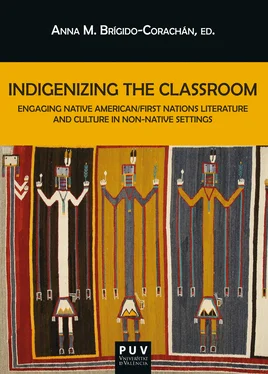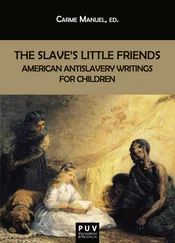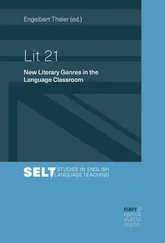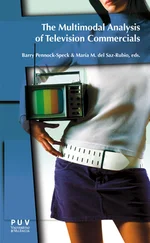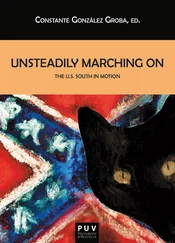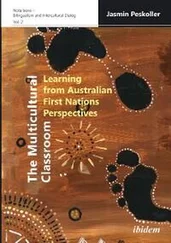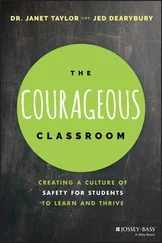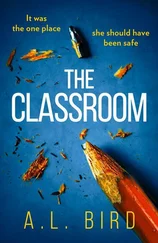———. Gerald Vizenor: Writing in the Oral Tradition . University of Oklahoma Press, 1996.
———. “Kimberly Blaeser.” Women of White Earth . Ed. Vance Vannote. University of Minnesota Press, 1999. 3-7.
———. “Native Literature: Seeking a Critical Center.” Looking at the Words of Our People . Theytus, 1993.
———. Trailing You . Greenfield Review Press, 1994.
Bowers, Neal & Charles Silet. “An Interview with Gerald Vizenor.” MELUS 8.1(Spring 1981): 41-49.
Erdrich, Louise. Books and Islands in Ojibwe Country . National Geographic Society, 2003.
Henry, Gordon, Jr. The Light People . University of Oklahoma Press, 1994.
Johnston, Basil. Ojibway Heritage . University of Nebraska Press, 1976.
LaDuke, Winona. Last Standing Woman . Voyageur Press, 1999.
Martineau, Jarrett & Eric Ritskes. “Fugitive indigeneity: Reclaiming the terrain of decolonial struggle through Indigenous art.” Decolonization: Indigeneity, Education & Society 3.1 (2014): I-XII.
Montana Human Rights Network. “The Case for Categorizing Anti-Indian Groups as Hate Groups.” Helena, Montana (July 2018): 1-13.
Rogers, John. Red World and White: Memories of a Chippewa Boyhood . University of Oklahoma Press, 1974.
Rumble: The Indians Who Rocked the World . Dirs. Catherine Bainbridge & Alfonso Maiorana. July 2017.
Spivak, Gayatri. Death of a Discipline . Columbia University Press, 2003.
———. “Ghostwriting.” Diacritics . 25.2 (Summer 1995): 64-84.
———. “Teaching for the Times.” The Journal of the Midwest Modern Language Association 25.1 (Spring 1992): 3-22.
Vizenor, Gerald. Bearheart: The Heirship Chronicles . University of Minnesota Press, 1990.
———. Chair of Tears . University of Nebraska Press, 2012.
———. Dead Voices . University of Oklahoma Press, 1992.
———. “Native American Indian Literature: Critical Metaphors of the Ghost Dance.” World Literature Today 66.2 (Spring 1992): 223-228.
———. The People Named the Chippewa . University of Minnesota Press, 1984.
Warren, William. History of the Ojibway People . Minnesota Historical Society Press, 1984.
1 So too does song, as the reenactment at the beginning of Rumble: The Indians Who Rocked the World of Frances Densmore recording an Anishinaabe singer, circa the 1920s, makes clear. The singer walks right out from another time, one figured by Densmore, by her project, by her fellow anthropologists, by America, as (an)other time, one fast fading away. The singer will have none of it. Instead, he carries into the future, circa the 1950s, an Indigenous beat and tempo, striking a chord that still resonates today: the power chord. The guitarist is Link Wray, Shawnee. Rumble: The Indians Who Rocked the World is bent on having its audience see what they have never seen, the all-too-often unknown or little told influence Native artists had and have on rock, blues, jazz, folk, and hip-hop.
2 Dead Voices is the title of a 1992 novel by Vizenor. In order to enliven his prose, to bring the oral to and through the written, Blaeser argues that Vizenor uses Anishinaabe storytelling techniques, elicits audience participation, and deploys a number of literary techniques in order to counter losses inevitable when moving from the oral to the written, including “abrupt transitions, unusual juxtapositions, pronoun shifts, repetitions, self-conscious or metaliterary devices, understatement, and lack of closure” (Blaeser Gerald Vizenor 33).
3 White Earth Anishinaabe writer Gordon Henry Jr. makes clear the link between words, writing, and a trickster turn early on in his 1994 novel The Light People when describing how Arthur Boozhoo has a child at a party rip apart “his parent’s most important correspondence,” the sodden bits of which are made whole after Boozhoo sings over them words that highlight the playful potential of the sign: “ Sleep, peels, angles of angels sing of sign, sword of words, elm smells concrete, encore on the corner, a northern ornithologists, jest in case, sends a letter which ends in ways to sway opinion to slice the union onion with a sword of words, without tears ” (Gordon Henry Jr. The Light People 2021). Words well used can make whole and thus serve as a weapon to be wielded against the correspondence, the words, of authority.
4 In 1983, Vizenor wrote, “The words the woodland tribes spoke were connected to the place the words were spoken. The poetic images were held, for some tribal families, in song pictures and in the rhythms of visions and dreams in music: timeless and natural patterns of seeing and knowing the earth” (Vizenor The People 24-26). Twenty years on, Erdrich writes that Anishinaabemowin’s (she uses the word Ojibwemowin) “philosophy is bound up in northern earth, lakes, rivers, forests, and plains. Its origins pertain to the animals and their particular habits, to the shades of meaning in the very placement of stones. Many of the names and songs associated with these places were revealed to people in dreams and songs—it is a language that most directly reflects a human involvement with the spirit of the land itself” (Erdrich 85).
5 In typical Vizenor fashion, a tricky game found in Chair of Tears : “Each player receives two cards down and four rounds of cards up with bets after each card is dealt. At the end, after the final round of cards and bets, the deck is shuffled, cut twice, and then the dealer turns over the card on the top of the secured deck. This is the wiindigoo card, the last card, and if that card is a king, queen, or jack, the same face cards in any hand of a player are dead and obsolete” (54).
6 Such is the note Rumble ends on, taking us to those standing with Standing Rock in 2016 and marching in the name of the planet and all its creatures at the People’s Climate March in 2014.
Конец ознакомительного фрагмента.
Текст предоставлен ООО «ЛитРес».
Прочитайте эту книгу целиком, купив полную легальную версию на ЛитРес.
Безопасно оплатить книгу можно банковской картой Visa, MasterCard, Maestro, со счета мобильного телефона, с платежного терминала, в салоне МТС или Связной, через PayPal, WebMoney, Яндекс.Деньги, QIWI Кошелек, бонусными картами или другим удобным Вам способом.
